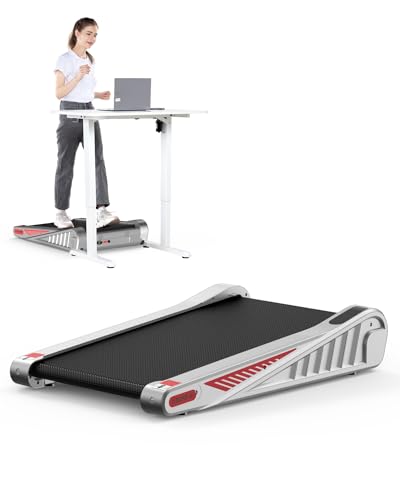The Rise of Self-Powered Treadmills: A Game Changer for Home Fitness
As the fitness industry continuously develops, the demand for convenience and development drives manufacturers to establish equipment that satisfies both requirements. Among these developments, self-powered treadmills have emerged as a popular option for fitness enthusiasts and casual users alike. Offering an effective exercise experience without the need for electricity, these treadmills accommodate everybody, from seasoned professional athletes to those simply beginning their fitness journey. In this post, we will explore the benefits, performances, and functions of self-powered treadmills and respond to some regularly asked questions.
What is a Self-Powered Treadmill?
A self-powered treadmill operates without an electric motor, instead counting on the user's energy to move the belt. This distinct style enables users to dictate the speed and strength of their exercise by modifying their stride or running speed. Self-powered treadmills typically feature a curved track or a flat design that promotes natural body motion, making them a popular choice for people wanting to optimize their exercise performance.
Advantages of Self-Powered Treadmills
Self-powered treadmills provide various advantages that interest a wide variety of users. Below, we break down the crucial advantages.
| Advantages | Description |
|---|---|
| Energy Efficiency | No electricity is needed, making them eco-friendly and minimizing electricity bills. |
| Adaptability | Users can walk, jog, or run at their own rate, making workouts adjustable. |
| Enhanced Gait and Posture | The design encourages appropriate running mechanics, promoting better posture and lowered injury risk. |
| Portability | Usually lighter and more compact, self-powered treadmills are simple to move and store. |
| Increased Caloric Burn | The effort required to power the treadmill can cause greater caloric expenditure throughout exercises. |
| Low Maintenance | Less mechanical parts mean less maintenance and lower repair expenses. |
| Connectivity Features | Numerous designs come equipped with Bluetooth or app connection for tracking workouts and setting goals. |
Downsides of Self-Powered Treadmills
While self-powered treadmills offer many advantages, some disadvantages should be thought about.
| Downsides | Description |
|---|---|
| Minimal Amenities | Generally, less features than electric treadmills, such as incline settings or pre-set workouts. |
| Steeper Learning Curve | Users may initially struggle to find a comfortable speed and stride. |
| Sound Level | Some models may produce more noise than traditional motorized treadmills, which could be a concern for home usage. |
Functions to Look For in a Self-Powered Treadmill
When choosing a self-powered treadmill, it's important to think about numerous functions that can improve the user experience. Below is a list of essential features to watch out for:
- Surface Material: A non-slip surface area offers safety throughout workouts.
- Track Design: A curved design may supply a more natural running experience, while flat surface areas can be easier for beginners.
- Toughness: Consider models made from quality products for durability.
- User Capacity: Ensure the treadmill can support your weight and the intensity of your workouts.
- Adjustable Resistance: Some self-powered treadmills use resistance settings to increase exercise difficulty.
- Mobility: Look for models with wheels or folding abilities for easy storage.
- Monitoring Capability: Built-in screens or app connectivity can assist track range, calories burned, and speed.
Leading Self-Powered Treadmills of 2023
To make a notified choice, here are some of the leading self-powered treadmills readily available today:
| Treadmill Model | Price Range | Features | Best For |
|---|---|---|---|
| Woodway Curve | ₤ 4,000 - ₤ 6,000 | Long lasting, curved style, high user capability | Serious athletes and fitness centers |
| AssaultRunner Elite | ₤ 2,800 - ₤ 3,500 | Adjustable resistance, integrated tracking capabilities | HIIT training |
| Xterra Fitness TR300 | ₤ 600 - ₤ 1,200 | Foldable style, light-weight, fundamental tracking functions | Casual users |
| ProForm Carbon T10 | ₤ 1,500 - ₤ 2,000 | Easy to use app integration, versatile style | Tech-savvy fitness enthusiasts |
| Technogym, SkillMill | ₤ 5,000 - ₤ 7,000 | Ingenious style for running and walking variations | Expert training environments |
FAQ about Self-Powered Treadmills
1. How do self-powered treadmills work?
Self-powered treadmills have a belt that moves based upon the user's movement. The faster you run or stroll, the quicker the belt moves, offering a smooth exercise experience without electrical input.
2. Can you use a self-powered treadmill for walking?
Absolutely! Self-powered treadmills are flexible and can be utilized for walking, running, or running, making them ideal for all fitness levels.
3. Are self-powered treadmills safe to use?
Yes, many self-powered treadmills are designed with safety in mind. Manual Treadmill For Walking as non-slip surface areas and handlebars make sure users stay safe and secure throughout workouts.
4. Is maintenance needed for a self-powered treadmill?
While they require less upkeep than motorized treadmills, routine cleaning and evaluation of the belt surface and frames are necessary to guarantee a long life expectancy.
5. Do self-powered treadmills have inclines?
While many self-powered treadmills do not have adjustable slopes, some designs may provide incline settings to increase exercise intensity.
Self-powered treadmills provide a special and stimulating technique to physical fitness, empowering users to take control of their exercises. They offer an environment where people can participate in personalized, effective training, and their effective design makes them a beneficial investment for numerous. Whether you're an experienced professional athlete or a beginner to fitness, a self-powered treadmill can improve your workouts while aligning with a dedication to sustainability. As the trend grows, it is clear that self-powered treadmills are set to play a significant function in the developing landscape of home physical fitness equipment.

